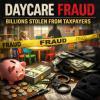
Breaking News
 2025: The Year the Government Stopped Pretending It Cared About Freedom
2025: The Year the Government Stopped Pretending It Cared About Freedom
 See inside the tech-topia cities billionaires are betting big on developing...
See inside the tech-topia cities billionaires are betting big on developing...
 Russia Sides With Venezuela During Tensions With The U.S.
Russia Sides With Venezuela During Tensions With The U.S.
 A Ripoff Of Historic Proportions: The Amount Of Money Involved...
A Ripoff Of Historic Proportions: The Amount Of Money Involved...
Top Tech News
 Laser weapons go mobile on US Army small vehicles
Laser weapons go mobile on US Army small vehicles
 EngineAI T800: Born to Disrupt! #EngineAI #robotics #newtechnology #newproduct
EngineAI T800: Born to Disrupt! #EngineAI #robotics #newtechnology #newproduct
 This Silicon Anode Breakthrough Could Mark A Turning Point For EV Batteries [Update]
This Silicon Anode Breakthrough Could Mark A Turning Point For EV Batteries [Update]
 Travel gadget promises to dry and iron your clothes – totally hands-free
Travel gadget promises to dry and iron your clothes – totally hands-free
 Perfect Aircrete, Kitchen Ingredients.
Perfect Aircrete, Kitchen Ingredients.
 Futuristic pixel-raising display lets you feel what's onscreen
Futuristic pixel-raising display lets you feel what's onscreen
 Cutting-Edge Facility Generates Pure Water and Hydrogen Fuel from Seawater for Mere Pennies
Cutting-Edge Facility Generates Pure Water and Hydrogen Fuel from Seawater for Mere Pennies
 This tiny dev board is packed with features for ambitious makers
This tiny dev board is packed with features for ambitious makers
 Scientists Discover Gel to Regrow Tooth Enamel
Scientists Discover Gel to Regrow Tooth Enamel
 Vitamin C and Dandelion Root Killing Cancer Cells -- as Former CDC Director Calls for COVID-19...
Vitamin C and Dandelion Root Killing Cancer Cells -- as Former CDC Director Calls for COVID-19...
10-min super battery to power a new breed of long-range plug-in hybrid

The Freevoy Super Hybrid Battery debuts to give PHEVs and extended-range electrics (EREVs) the type of zero-emissions all-electric range that was previously reserved for battery electric vehicles. Freevoy-powered hybrids will travel farther with fewer fueling stops, whether they're relying solely on battery power or tapping into an ICE drive or generator. When battery power and fuel finally do run out, drivers can choose 10-minute battery charging, refueling or both.
CATL frames its newest battery as a solution to commonly cited PHEV and EREV shortcomings at a time when consumer interest in hybrid vehicles is increasing. More specifically, the Freevoy battery addresses issues with insufficient range, slow charging times and diminished performance in cold temperatures.
Leaping well past the single day's worth of all-electric commuting around which many plug-in hybrids are optimized, CATL aims the Freevoy at a full week's worth of single-charge battery-only commuting, slapping on a range estimate of 249 miles (400 km). The company has not released a Freevoy capacity to go along with that estimate, and any range will, of course, depend upon the vehicle in which it resides, as well as driving conditions and other factors.
The Freevoy isn't only a "super hybrid" because of the vehicles it's designed to power but also its chemistry. It takes advantage of CATL's AB architecture, combining sodium-ion and lithium-ion batteries into a single pack in a defined ratio. This improves cold-weather performance, extending low-temperature range by a claimed 5% and delivering a seamless driving experience down to -20 °C (-4 °F). Further, CATL says the battery achieves discharge capability down to -40 °C (-40 °F) and charging to -30 °C (-22 °F).
When it comes time to charge, the Freevoy battery benefits from CATL's 4C ultra-fast charging technology, sucking in 174 miles (280 km) worth of range in just 10 minutes. Fast lithium ion transfer is ensured by a fast ion conductor coating on the cathode, fast-charging graphite and novel nano-coating technologies for the anode, multi-gradient layered electrode design, and ultra-high conductivity electrolyte formulation.



